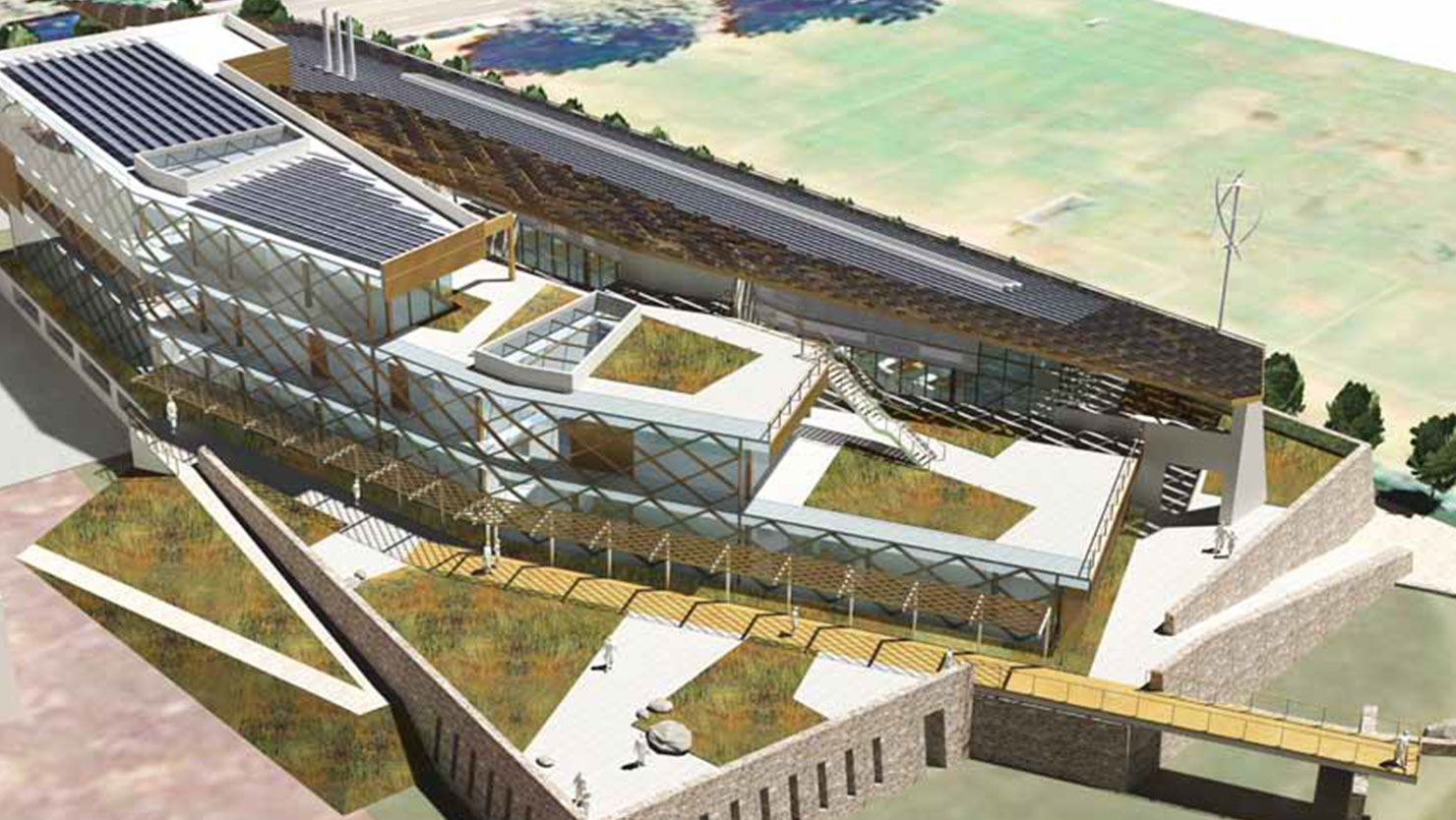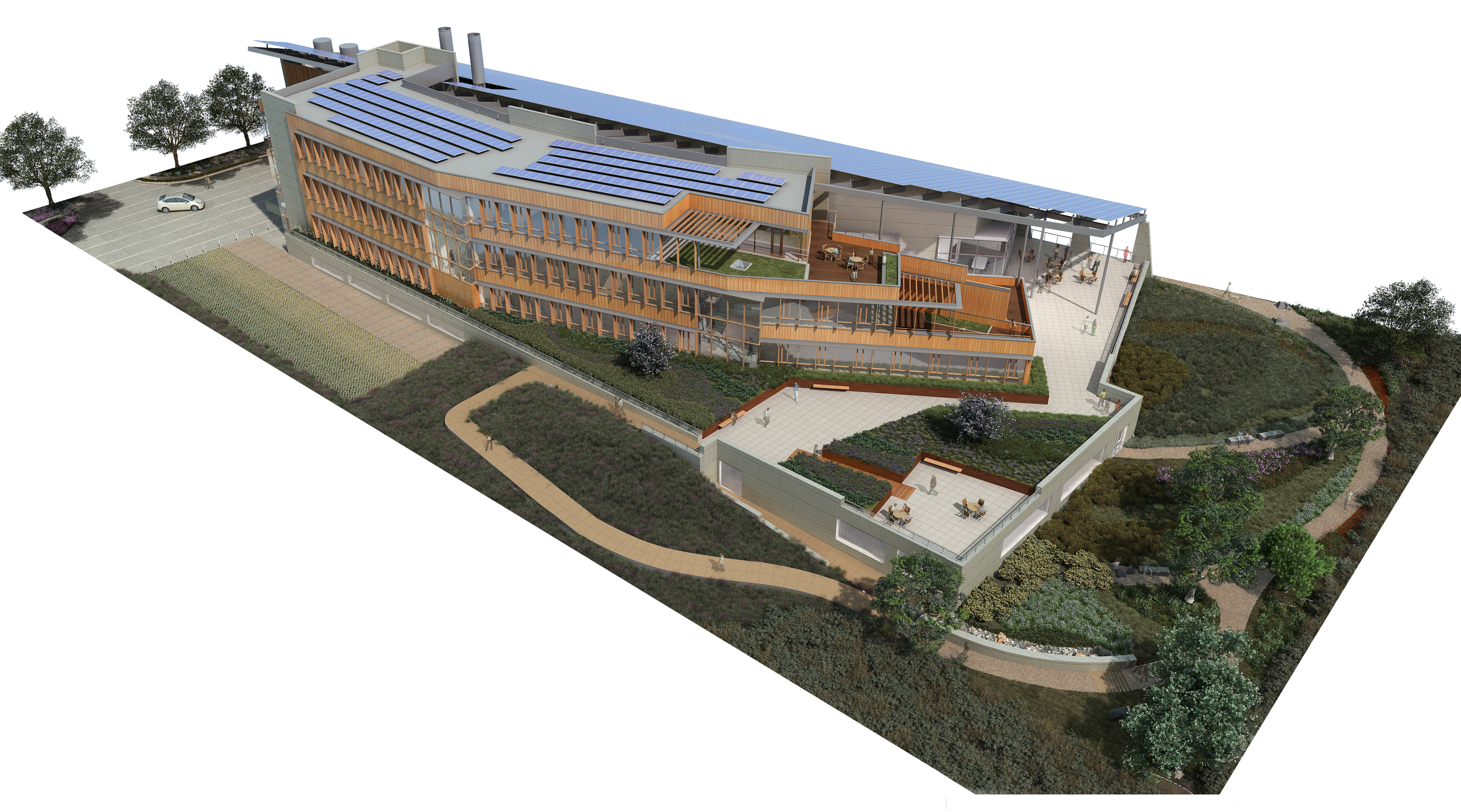JCVI La Jolla Breaks Ground

It is official! On Tuesday, September 20th JCVI officially broke ground on a new La Jolla, California sustainable lab, to be located directly on the campus of the University of California, San Diego. Craig Venter, JCVI Founder and President along with UCSD Chancellor Marye Anne Fox; Vice Chancellor for Health Sciences and Dean of the School of Medicine, David Brenner; Director of Scripps Institution of Oceanography and Vice Chancellor for Marine Sciences, Tony Haymet; and San Diego Mayor Jerry Sanders wielded bamboo handled shovels and green hardhats at a formal event attended by 120 guests to kick off the construction of JCVI La Jolla.
The ceremony marked a new chapter in the development of JCVI La Jolla and bodes well for the exciting times ahead as this one-of-a-kind facility is constructed. During the course of construction and through occupancy of the building we will use this blog to keep you abreast of the building’s progress and discuss many of the unique features that will be incorporated into JCVI’s future home. To learn more about the building program, architecture, and sustainable features click here. Otherwise, let’s start with a little background.
More than six years in the making, the JCVI La Jolla project has developed a reputation for pushing the envelope in terms of sustainability and energy efficient laboratory design. The project aspires to achieve carbon neutrality while also demonstrating the benefits of sustainable building practices. Both of these are lofty yet we felt achievable goals.
From the beginning, UCSD Chancellor Marye Anne Fox was an enthusiastic supporter of the project, encouraging scientific collaborations with JCVI and sharing JCVI’s sustainability goals. UCSD’s Resource Management and Planning team, including Vice Chancellor Gary Matthews, Nancy Kossan, Boone Hellmann, Brian Gregory, and many others offered invaluable advice and assistance.
In 2006, we began a nationwide search for an architect to lead the project. We came to a startling conclusion: while the entire industry talked the “green building” talk, very few had actually walked the walk. Fortunately, there was one firm who had both designed some great laboratory buildings and whose passion for sustainability matched our own. Zimmer Gunsul Frasca Architects (ZGF) in Los Angeles officially joined the team in February of 2007 under the leadership of Ted Hyman and Doss Mabe.
But having the best architects wasn’t enough, we needed a highly efficient mechanical, electrical, and plumbing (MEP) design to allow us meet our “net zero” energy goals, given the energy intensive nature of laboratories. While interviewing another architectural firm, we met Peter Rumsey, a mechanical engineer who was rethinking energy efficiency in buildings and promoting novel alternatives to traditional MEP design. I recall Peter describing one project where he had replaced all of the 90 degree piping bends in a building with swept radius connectors, reduced the system’s overall resistance, and eliminated the need for dozens of pumps and their associated energy consumption. As if this approach to engineering wasn’t enough of a selling point, we were delighted to discover his firm had just completed the first LEED Platinum certified laboratory at UC Davis’s Tahoe Center. Rumsey Engineers (now Integral Group) joined ZGF and began assembling the world-class design team that would bring JCVI La Jolla to life on paper.
The first several months of the design process were beyond exciting. The hand-picked team of green building experts all exuded a noticeable sense of excitement every time we sat around the table to discuss ideas for the project. The creativity floodgate had been opened and was materializing itself in all aspects of the building’s design from lighting systems to on-site water treatment. Sustainability became the team’s mantra not only from an environmental perspective, but also for the research that would take place in the laboratories. The labs had to support not only the science of today, but the science of tomorrow. As a result, we focused on flexibility to ensure the building could adapt to the occupants’ needs over time. Late in 2007, ZGF presented an architecturally stunning building that not only met the original design intent of achieving carbon neutral operation through “net zero” energy use, but also employed a constructed wetland to treat waste-water for reuse, and exceeded the USGBC’s LEED Platinum rating criteria.
Fast forward to today. The design team has spent the past 10 months working relentlessly to incorporate hundreds of pages of detail into the original design and develop a set of construction documents from which the project will be built. Coordination meetings have been held on a regular basis to ensure every element of the building meets JCVI’s operational needs. In many cases, the original design was improved after the design team took a second look. For example the original lab layout was modified to provide more bench area and increase flexibility of the support areas. What started as one large open lab became a series of “neighborhoods” separated by highly configurable rooms that can adapt to a wide array of equipment configurations.
While the architects prepared drawings, we began checking off the long list of items needed for ground breaking. Applying the same level of scrutiny used in selecting the architect and engineers, we began interviewing builders to join the team. McCarthy Building Companies came onboard early in 2011 and immediately began providing valuable input about constructability and delivering the highest levels of quality throughout the construction process.
In parallel with our design efforts, we worked with many UCSD offices and individuals to complete numerous environmental studies, perform plan reviews, and provide community outreach about the project. The entire UCSD community has been a great supporter of both JCVI and the sustainability goals of the project. We are grateful for UCSD’s support and guidance throughout the multi-year development process.
Today we stand poised to begin mass excavation for the foundation in late November. Until then, we are busy working to mobilize work trailers, install temporary power, water, and data at the site, and construct a temporary road between the construction site and Expedition Way.
